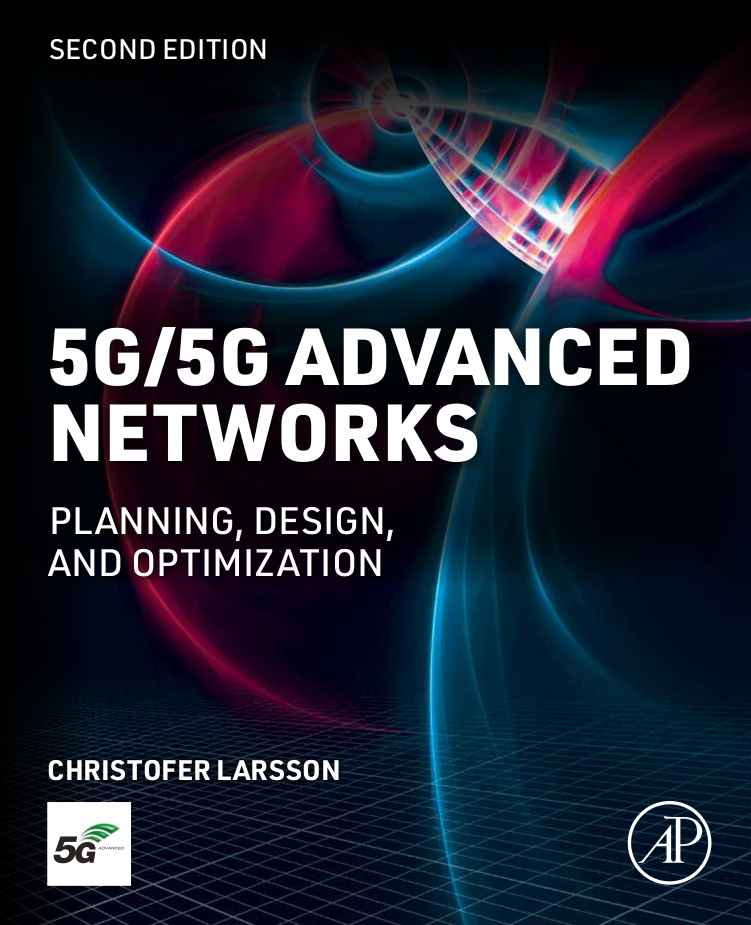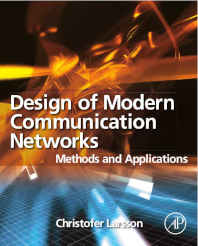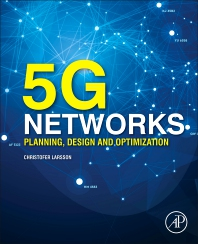Christofer Larsson – physicist and engineer

5G/5G Advanced Networks: Planning, Design and Optimization, 2nd edition, presents practical methods and algorithms for the design of 5G/5G Advanced Networks, covering topics that range from network resilience to how streaming data analytics can be used in network orchestration and slice optimization. The book addresses 5G optimization issues that are data driven, high dimensional and clustered.
The new edition is extensively revised and updated with 5 new chapters:
- Information theory applied to design targets and performance limits
- 5G+radio interface and radio planning
- Heavy traffic analysis
- Network slicing
- Machine learning methods for off line analytics
This new edition now gives a broad and complete foundation in network optimization techniques for all subsystems of the cellular network by:
- Showing how to optimize networks end-to-end, including dependencies between subsystems
- Presenting network tuning methods to improve capacity, service quality, energy efficiency, and resilience – in relation to cost
- Presenting designs of network slices with multi-objective performance targets
The new edition also includes new practical hints sections that show algorithm implementation (coding and unit testing), solution validation, bench-marking, potential pitfalls, the use of open-source software, illustration of code objects with examples in Python.
5G/5G Advanced Networks: Planning, Design and Optimization, 2nd edition, is an invaluable resource for telecom operators and service providers, university researchers, graduate students and network planners interested in practical methods for optimizing networks for large performance improvements and cost savings.
Academic Press book details: https://shop.elsevier.com/books/5g-5g-advanced-networks/larsson/978-0-443-32940-1.
Author e-mail: christofer@mathgallery.com
Earlier publications
Two books, published in 2014 and 2018, discuss engineering topics in telecommunications. Design of Modern Communication Networks is a monograph on general engineering principles in telecommunications, with techniques in traffic theory, queueing theory and network programming.

As the title suggests, 5G Networks – Planning, Design and Optimization, is concerned with some methods from real-world 5G design projects, and covers topics such as network science, machine learning and combinatorial optimization.

A few papers have are also available, academic as well as popular scientific, either published or unpublished.
On Bounded Peaking in the Cheap Control Regulator (pdf), co-authored with Xiaoming Hu, presented at IFAC YAC’95 and published as a conference paper.
My thesis, part of my Master’s degree in Engineering Physics, consists of the material under the links below (slightly edited)
Preliminaries
The Concept of Zero Dynamics – a Brief Survey
Frequency Domain Conditions for $L^2$-Bounded Cheap Control Regulators
Geometric Interpretation of the Cheap Control Regulator
The General Case
Conclusion
References
